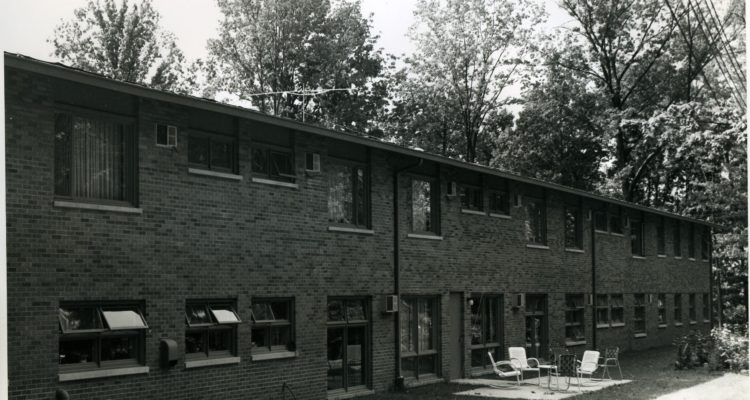By: Leah Wilkinson
Although they were only 49 years old when demolished, they held lots of history during their short time on campus.
Bonaventure and Lenihan residence halls were torn down in 2009 to make room for the Siena Complex.
What students may not know is the rich history once held within the two buildings.
Bonaventure was originally the friary, housing Franciscan priests, while Lenihan, named after Bernard Lenihan, the first chairman of the board of trustees, originally housed Diocesan priests. Each became a residence hall for students in 1982.
The two halls were built in 1960, when Bellarmine was just 12 years old. Each hall had 16 rooms.
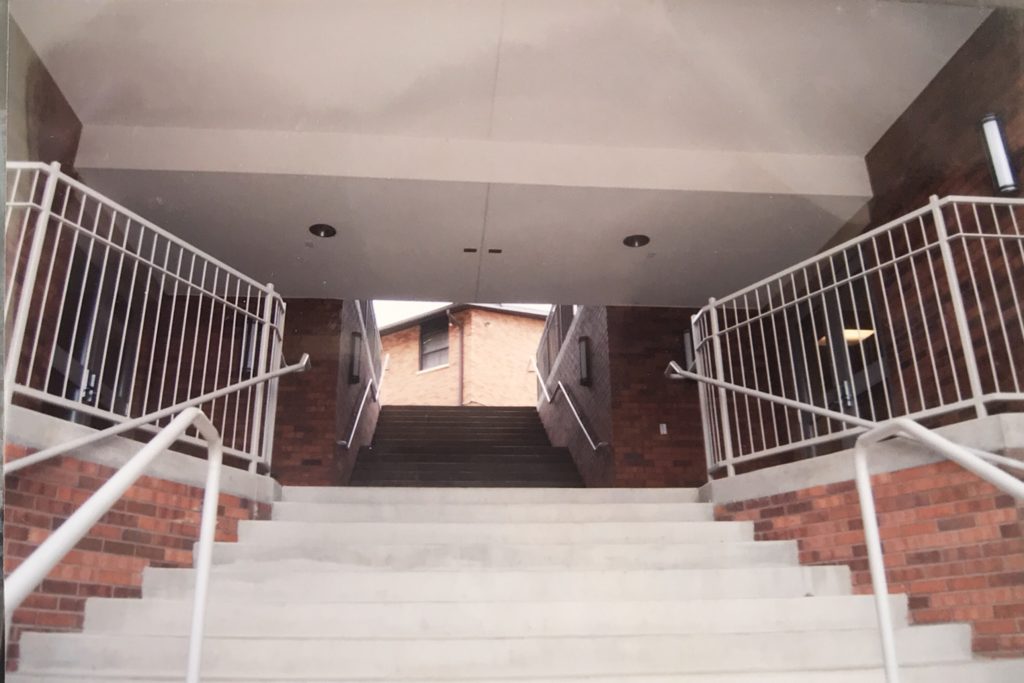
Photo courtesy of Father Clyde Crews.
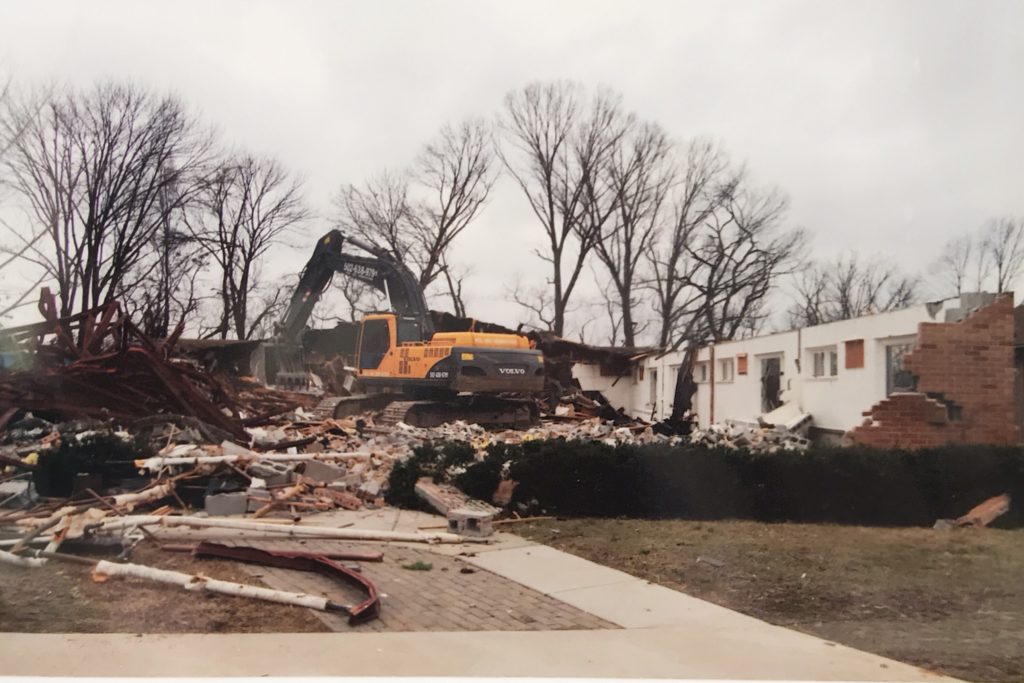
Photo courtesy of Father Clyde Crews.
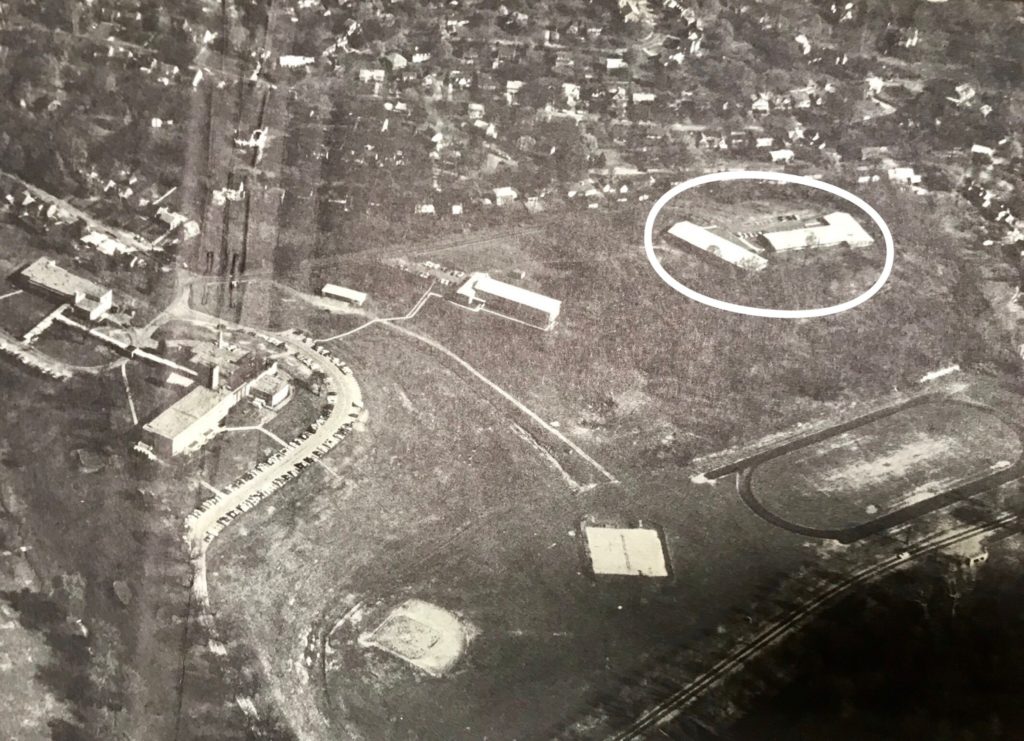
Photo courtesy of The Lance.
“It looked so different,” said longtime Bellarmine faculty member Dr. Bob Pfaadt. “Each of these [residence halls] had a kitchen and a place for the priests to eat, and they had a community room.”
Both halls appeared to be one-story residences, but Bonaventure was actually two. It was built on a hillside. Pfaadt said the views from Bonaventure and Lenihan were gorgeous during the fall, as the halls were surrounded by trees.
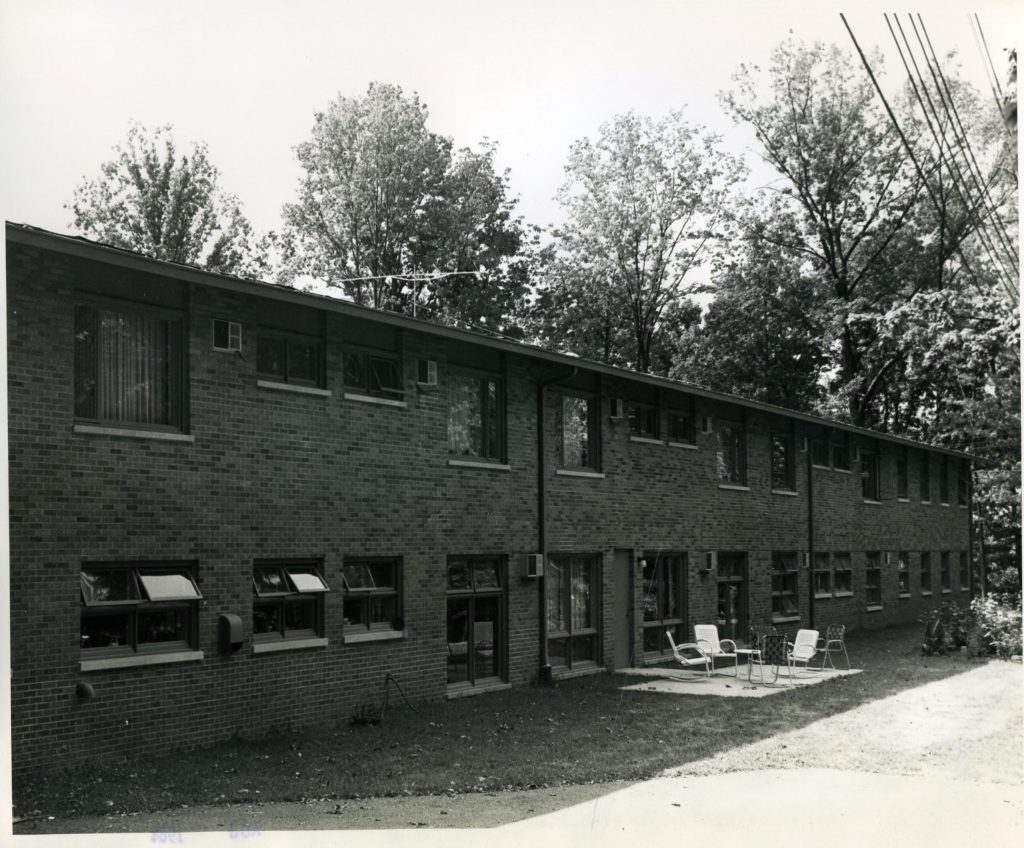
Photo courtesy of Bellarmine University.
Father Michael Wimsatt graduated from Bellarmine in 2002. He remembers living in Bonaventure his freshman year. “It was all one floor and nobody lived in the basement,” he said. “Three people lived in a room, so they were a pretty good size.”
Bellarmine historian and former faculty member Father Clyde Crews lived in Lenihan from 1973 to 1982.
“They were nice, spacious rooms, and we lived very happily there,” Crews said.
Crews said the rooms were sectioned off, so there was a sitting area, a bedroom, a bathroom and a lot of bookshelves.
“Father Karl Rahner, who was considered the most important priest of the century, stayed in Lenihan,” Crews said. Rahner was there for three nights in April 1979 while he was in the area to speak to a gathering of interfaith theologians at Bellarmine and to monks at Gethsemani, Crews said.
Those closely affiliated with Bellarmine stayed in Lenihan as well. “One thing people always talk about in Lenihan was Father Treece, the founding vice president,” Crews said. “One day they put up a security wall and they didn’t tell him, and he got mad and took a hatchet to it.”
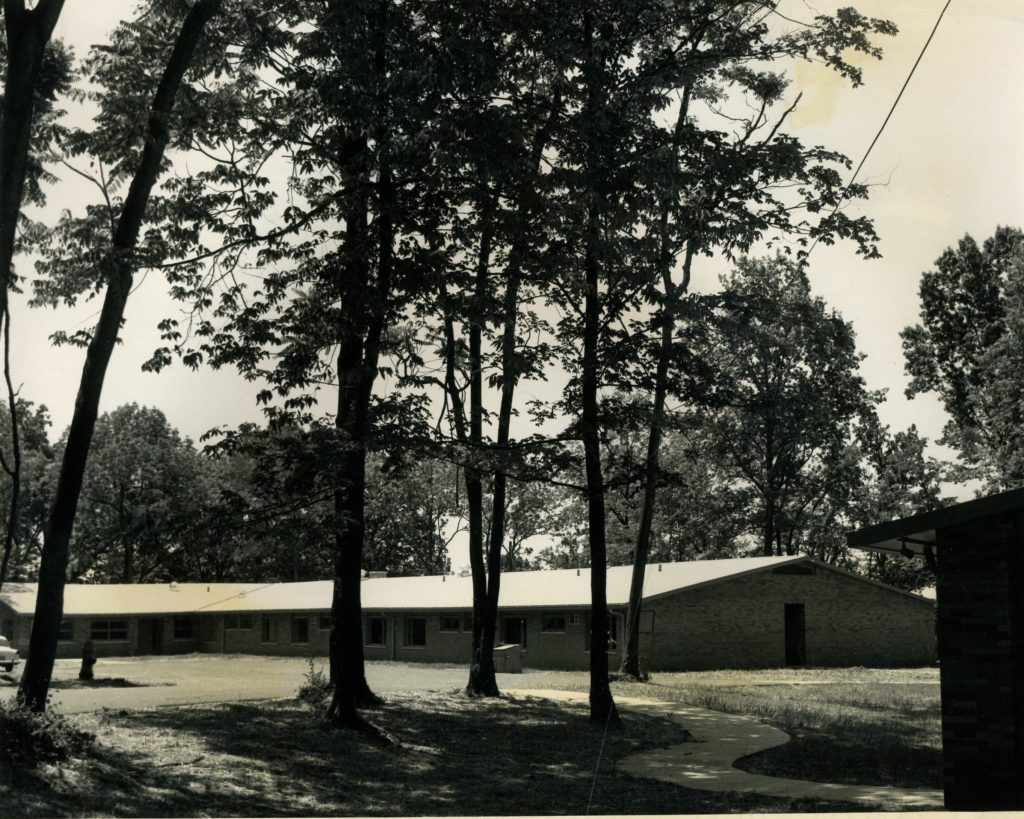
Photo courtesy of Bellarmine University.
Crews said Bonaventure also had its own chapel.
Thomas Merton spent his last night in Kentucky in Bonaventure Hall, leaving for Asia the next day. He would die three months later.
Crews said the dean of students, Father John Loftus, called him during summer vacation in 1968 when Crews was in grad school, saying “We’re getting together with Thomas Merton tonight. Would you like to join us?”
“I said, ‘Father John that’s a rhetorical question if I ever heard one.’”
After dinner, Father John invited Crews to join him the next morning, as Merton was going to celebrate Mass. “It was going to be at 6:30 or something, and I said ‘Oh no, no thanks, I’ll go somewhere else,’ and I’ve always kicked myself ever after,” Crews said.
Crews also said Ken Burns stayed in the luxury suite in Bonaventure while he was giving a talk at Bellarmine in 1990. “I was supposed to pick him up the next morning at 7 to take him to the airport,” Crews said.
When Crews picked Burns up, he was noticeably agitated. He said a security guard bashed in his door in the middle of the night, wanting to know who Burns was and what he was doing in the otherwise unoccupied hall. Burns couldn’t get back to sleep after all the racket, so he got up and began his day with a shower, only to find there was no hot water.
“So, his memories of Bellarmine are not very happy,” Crews said.
Luckily, Burns’ bad experience was a rarity. “They were very active facilities up there,” Pfaadt said. “The students who lived there loved them.”
Wimsatt said there was even a ropes course, which was used during freshman orientation every year, near the halls.
“In the late spring of 1982 they announced they were going to put the nursing program in [Lenihan], so they gave all the priests two months to get out and find a place to live,” Crews said.
Crews said founding father Monsignor Alfred Horrigan lived in Lenihan along with Monsignor Raymond Treece “and significantly had rooms one and two.”
A time capsule commemorating the year 1960 sat as the cornerstone of Lenihan Hall until its destruction. Located inside the time capsule was a program from when Bellarmine played basketball against the University of Louisville in the initiation of a fieldhouse now known as Knights Hall, as well as a picture of a newly formed Bellarmine glee club and an issue of the Archdiocese of Louisville newspaper, The Record.

Photo courtesy of Bellarmine University.
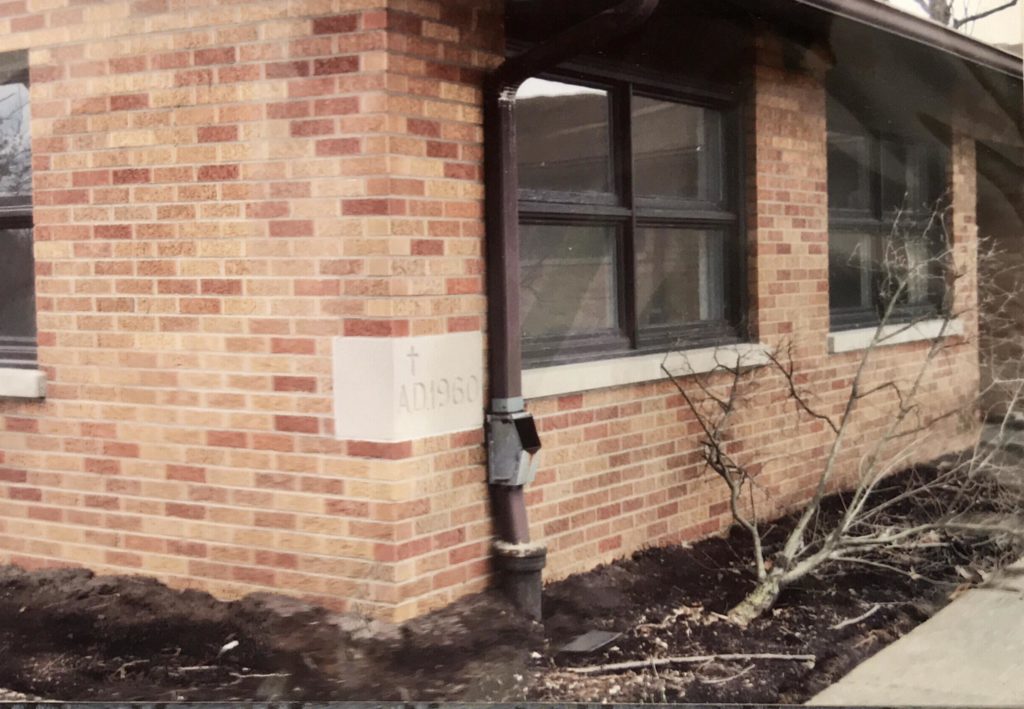
Photo courtesy of Father Clyde Crews.

